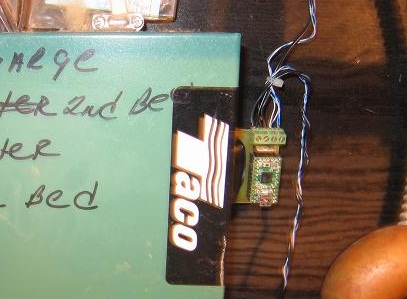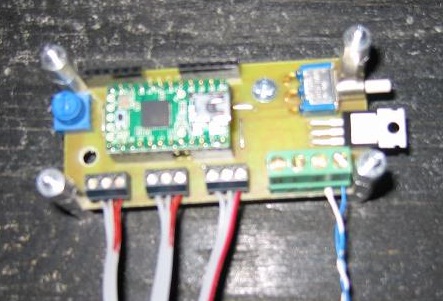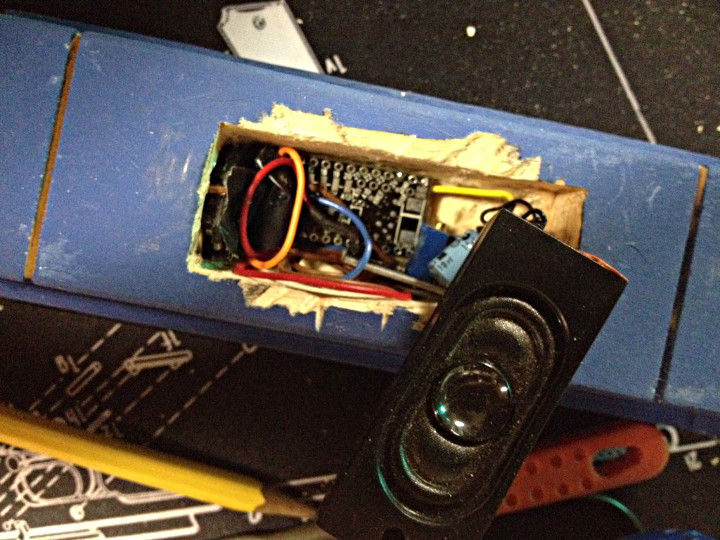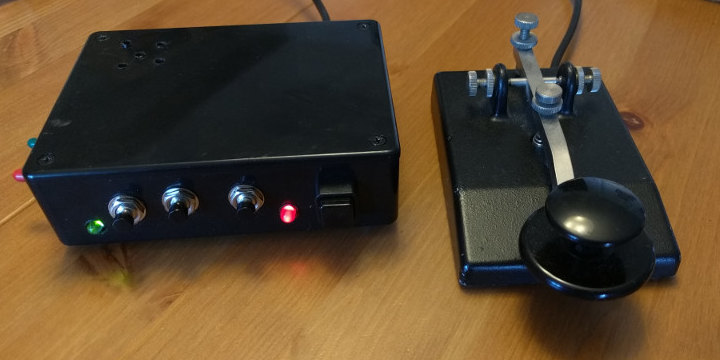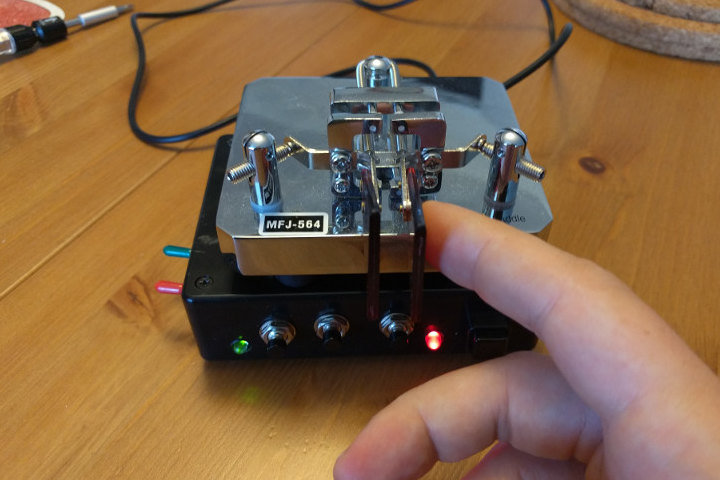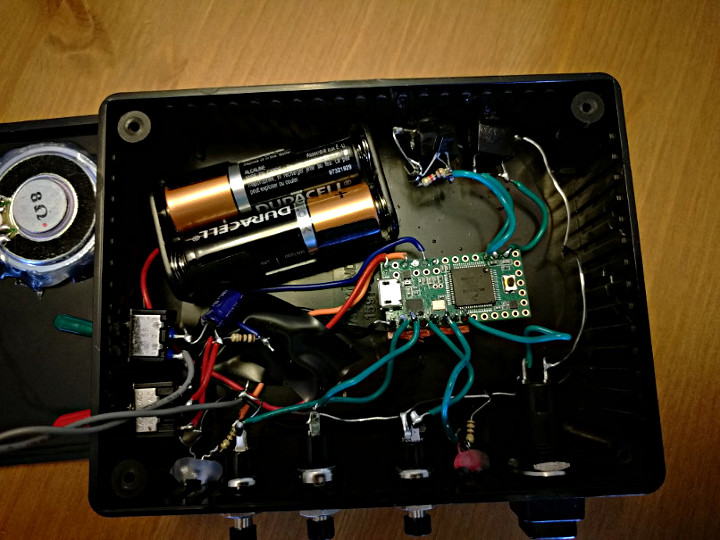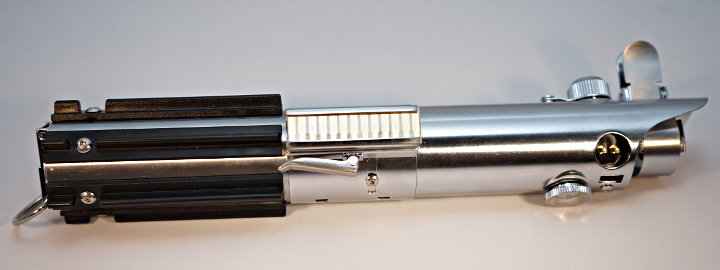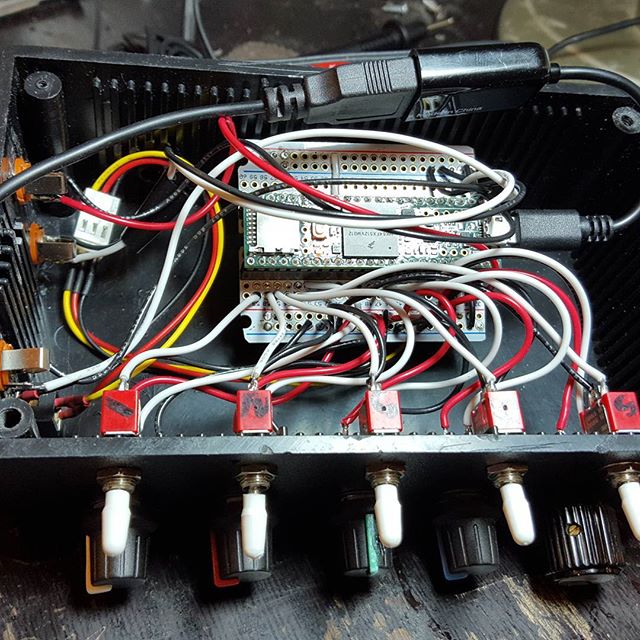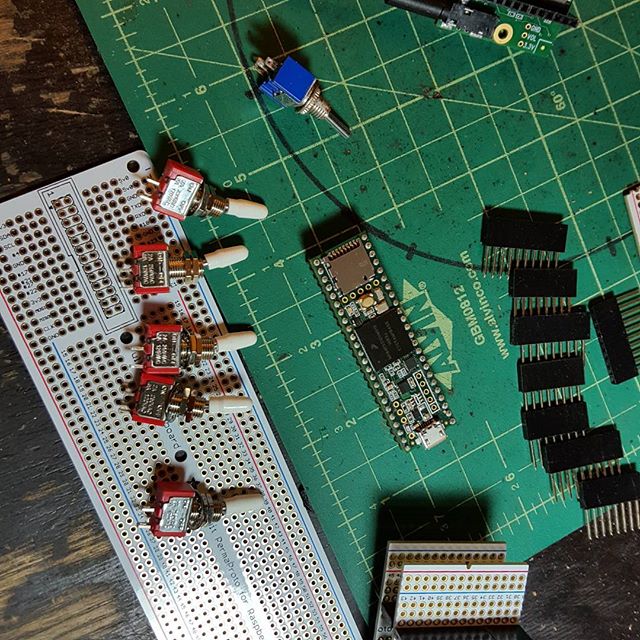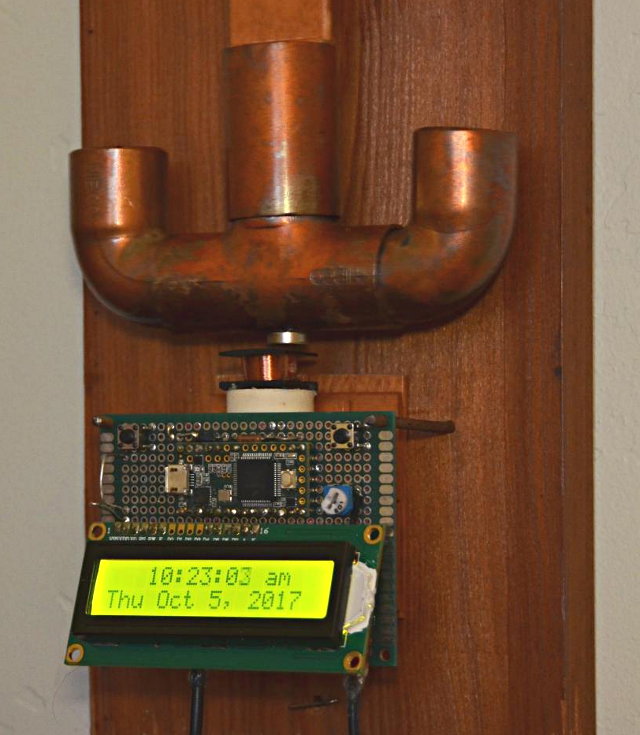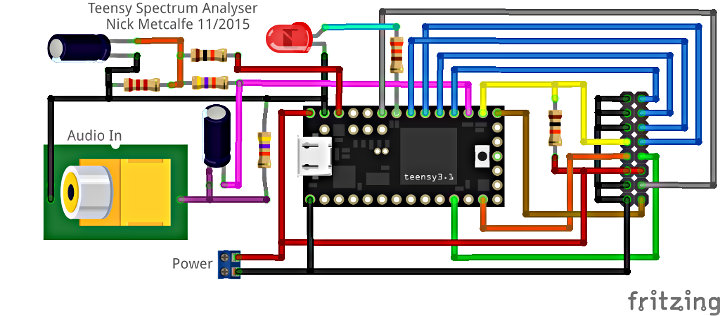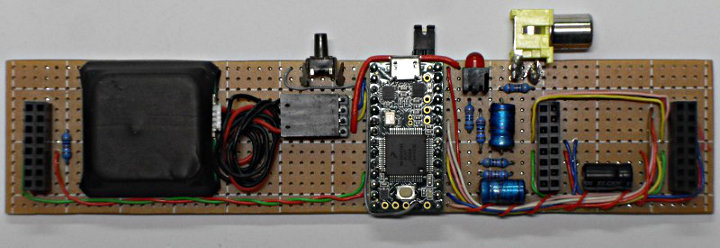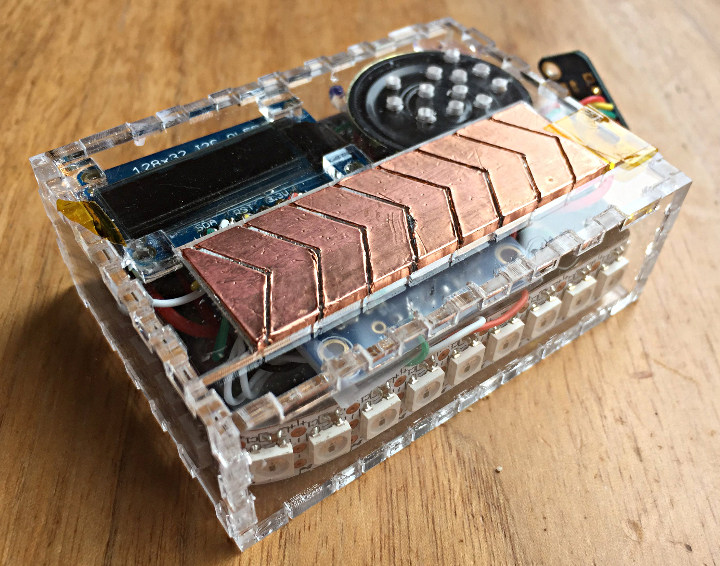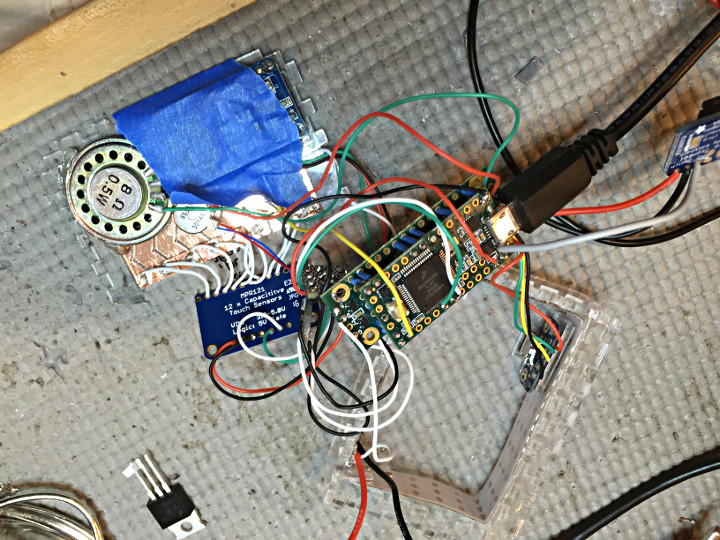Michele Perla put together a DIY USB MIDI Controller. The MPC (Music Production Controller).
This video shows the controller in action at the Rome MakerFaire.
Mick needed a simple and effective instrument to create drum beats without having to manually write them note by note. He wanted something more than most of the DIY MIDI controllers out there that use simple on/off buttons. The answer was to build his own using force sensitive resistors (FSRs).
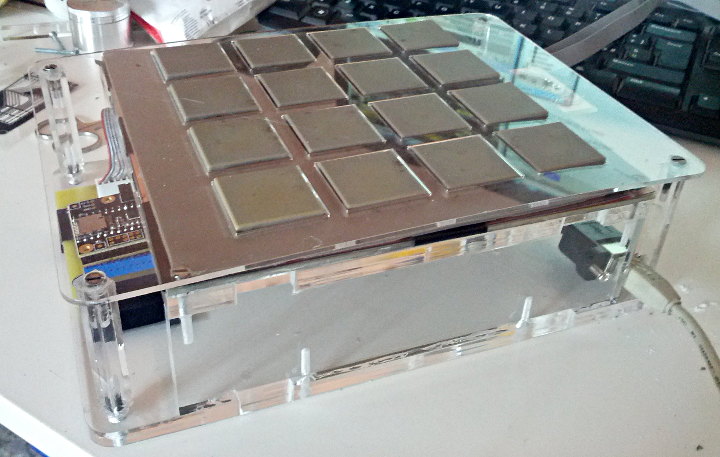
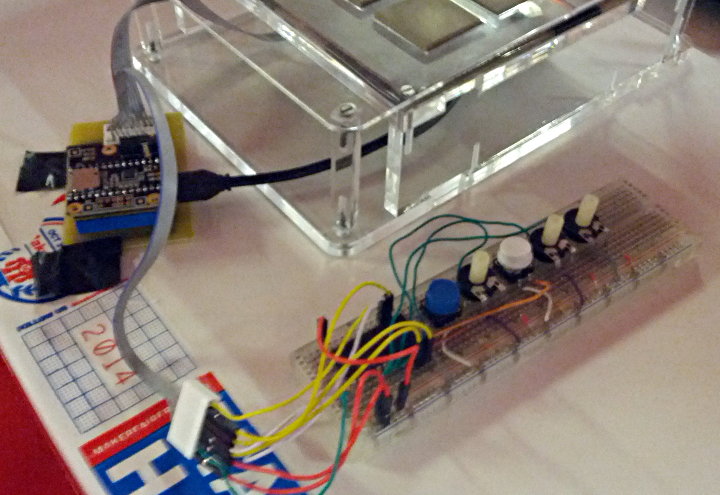
The controller has 16 buttons using FSRs arranged in a 4×4 matrix. The FSRs can sense the amount of pressure applied to a button and use that information for things such as a velocity of a note, control change value, etc.
There is a pretty good write up on his HackADay.IO project page that includes schematics of the project.
